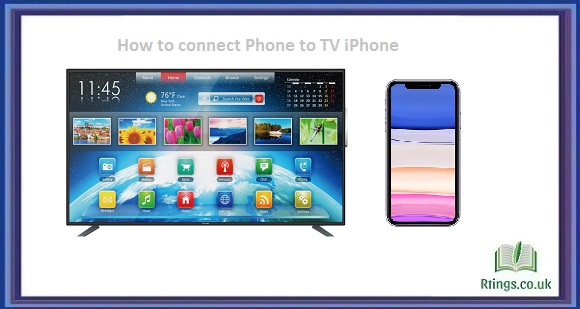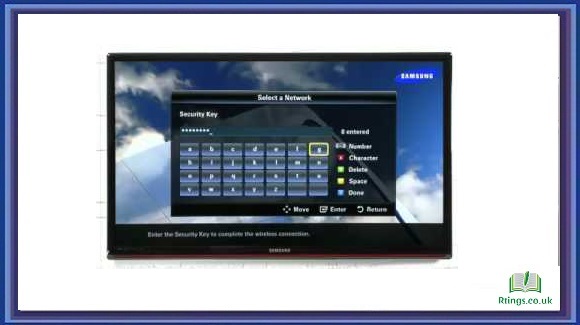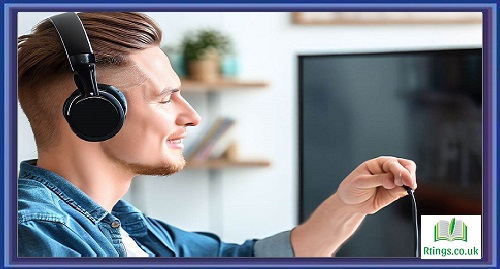Connecting your iPhone to a TV is a great way to enjoy your favorite movies, TV shows, and other content on a larger screen. With today’s technology, it’s easier than ever to connect your phone to a TV, and several methods exist. In this article, we’ll explore some ways to connect your iPhone to a TV and the benefits of each method.
Using an HDMI cable
One of the most common ways to connect your iPhone to a TV is by using an HDMI cable. This method is relatively simple and requires only an HDMI cable, an adapter, and a TV with an HDMI port. The HDMI cable allows you to transmit audio and video from your phone to your TV, providing high-quality pictures and sound.
To connect your iPhone to a TV using an HDMI cable, you must purchase an adapter that connects your phone’s Lightning port to an HDMI cable. You can find these adapters online or at your local electronics store. Once you have the adapter, plug one end of the HDMI cable into the adapter and the other into the TV’s HDMI port. Then, plug the adapter into your iPhone’s Lightning port, and you should be ready to go.
Using AirPlay
Another way to connect your iPhone to a TV is by using AirPlay. AirPlay is a technology developed by Apple that allows you to wirelessly stream content from your iPhone to an Apple TV or a TV that supports AirPlay.
To use AirPlay, your iPhone and TV must be connected to the same Wi-Fi network. Once connected, swipe up from the bottom of your iPhone’s screen to open the Control Center, then tap the AirPlay icon. You’ll see a list of available AirPlay devices, including your TV. Tap your TV’s name, and you should be ready to start streaming.
Using a Chromecast
If you don’t have an Apple TV or a TV that supports AirPlay, another way to connect your iPhone to a TV is by using a Chromecast. Chromecast is a device developed by Google that plugs into your TV’s HDMI port and allows you to stream content from your phone, tablet, or computer.
To use Chromecast, you must download the Google Home app on your iPhone and set up your Chromecast device. Once set up, open the app and select the device you want to cast to. Then, choose the content you want to cast from your iPhone and tap the Cast icon. Your content should start playing on your TV.
Using a Smart TV
Finally, if you have a smart TV, you can connect your iPhone to it directly. Smart TVs have built-in Wi-Fi and apps that allow you to stream content from your phone, tablet, or computer.
To connect your iPhone to a smart TV, you must ensure both devices are connected to the same Wi-Fi network. Then, open the app on your TV that supports AirPlay or screen mirroring. On your iPhone, swipe up from the bottom of the screen to open the Control Center, then tap the AirPlay icon. Select your TV from the list of available devices, and your iPhone’s screen should appear on your TV.
The benefits of Connecting Your iPhone to a TV have several advantages. First, it allows you to enjoy your favorite content on a larger screen, which can enhance your viewing experience. Second, it allows you to share your content with others, which can be great for social gatherings or family movie nights. Finally, it can be a great way to save money on expensive cable subscriptions, as many streaming services offer a wide variety of content at a fraction of the cost.
Things to Consider When Connecting Your iPhone to a TV
Before connecting your iPhone to a TV, there are a few things to keep in mind. First, ensure your TV has an HDMI port, as this is required for most of the methods we discussed above. Second, ensure you have the cables and adapters to connect your iPhone to your TV. Finally, be aware of any compatibility issues between your iPhone and your TV. For example, some older TVs may not support AirPlay or may be incompatible with certain streaming services.
Conclusion
In conclusion, there are several ways to connect your iPhone to a TV, each with benefits and drawbacks. Whether you use an HDMI cable, AirPlay, Chromecast, or a smart TV, connecting your phone to a TV is a great way to enjoy your favorite content on a larger screen. Just be sure to remember the things to consider before connecting your devices to ensure you have the best possible viewing experience.
Frequently Asked Questions (FAQs)
What if my TV doesn’t have any of the connection options mentioned in the article?
If your TV has no connection options mentioned in the article, consider purchasing a new TV or a separate device that can connect your iPhone to your TV. Some options include purchasing a streaming device, such as an Amazon Fire Stick or a Roku, which can connect to your TV via HDMI and allow you to stream media from your iPhone. Alternatively, consider purchasing an Apple TV, which can also connect to your TV and allow you to use AirPlay to stream media from your iPhone wirelessly. If you’re unsure which option is best for you, consult with a technology specialist or research to find the best solution for your needs and budget.
Can I connect my iPhone to a non-smart TV?
Yes, you can connect your iPhone to a non-smart TV using various methods, such as using an HDMI adapter, an Apple TV, or a Chromecast device. However, your TV must have an HDMI port or a USB port that can support an HDMI adapter. If your TV doesn’t have any of these ports, consider upgrading your TV or purchasing a new device that can connect your iPhone to your TV. It’s also important to note that not all non-smart TVs will be compatible with all methods of connecting your iPhone, so it’s important to research or consults a technology specialist to find the best solution for your specific TV model.
Can I connect my iPhone to multiple TVs at once?
Yes, it is possible to connect your iPhone to multiple TVs simultaneously using some of the methods mentioned in the article, such as an HDMI splitter or an Apple TV. An HDMI splitter allows you to split the HDMI signal from your iPhone to multiple TVs, while an Apple TV can connect to multiple TVs and allow you to use AirPlay to stream media from your iPhone wirelessly. However, it’s important to note that the quality of the media may be affected if you are splitting the signal to multiple TVs. It may also require additional setup and troubleshooting to ensure both TVs receive the signal properly. Additionally, not all TVs may be compatible with these methods, so it’s important to check the compatibility of your devices before attempting to connect your iPhone to multiple TVs.







